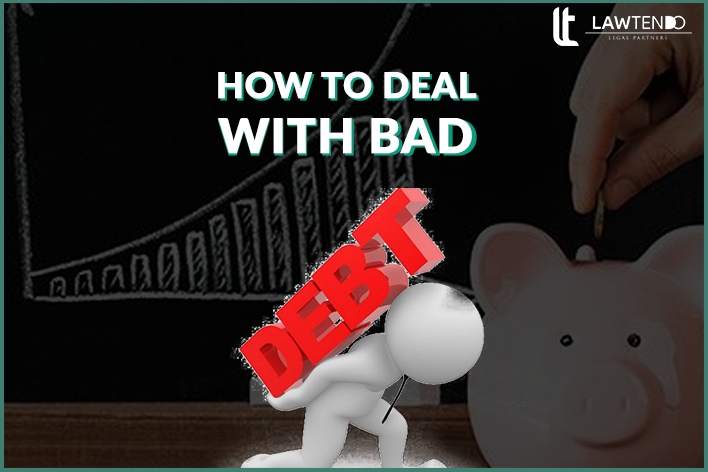How to deal with bad debt ?

Date : 06 Sep, 2019
Post By Sankul Nagpal
Having surplus money to invest or to use for other purposes is a boon not everyone is lucky to have. This is why many of us acquire money on credit in times of need. This leads to monetary debt that we need to pay.
What is debt?
Debt is an amount of money borrowed by one party from another. Debt is used by many corporations and individuals as a method of making large purchases that they could not afford under normal circumstances. A debt arrangement gives the borrowing party permission to borrow money under the condition that it is to be paid back at a later date, usually with interest.
Debt can be represented by a loan note, bond, mortgage or other form stating repayment terms and, if applicable, interest requirements. These different forms all imply intent to pay back an amount owed by a specific date, which is set forth in the repayment terms. One who owes is a debtor or debtor; one to whom it is owed, is a debtee, creditor, or lender.
The most common forms of debt are loans, including mortgages and auto loans, and credit card debt. Interest is used as a way to ensure that the lender is compensated for taking on the risk of the loan.
Knowing how to handle your debt can be tricky, especially if you’re struggling to cover your monthly payments. There are different ways to approach each kind of debt — and there are ways to find debt relief.
What is bad debt?
Bad debt is a loss that a company incurs when credit that has been extended to customers becomes worthless, either because the debtor is bankrupt, has financial problems or because it cannot be collected. It is expensed on the income statement.
Bad debt is an expense that all businesses have to allow for and record this in the allowance for doubtful accounts, which is also known as a provision for credit losses.
Recovering bad debts can be an arduous task, but before a bad debt can be reclaimed, it has to be identified in time before things become worse.
The customer frequently breaks the terms of repayment like late payment, postponement, etc. offering frivolous excuses
Bad debt might be marked with the contact person is unavailable whenever a call is made for debt collection. Or when the debtor changes the contact telephone no. and/or address without leaving forwarding information
How to deal with bad debt?
The next step after noticing a bad debt is to act on reclaiming it. It is better to try to recover it oneself without seeking outside help first. This would help in keeping the communication channels open and in retaining the client. In all these attempts, proper records should be kept so that it can be shown as proof if it goes to dispute resolution.
If all the in house attempts fail to recover a debt, then it is time to contact the collection agencies. These agencies have experience in handling delinquent cases and the necessary facilities to take follow up the action with the debtor.
Next step involves legal action, the borrower is served with a Statement of Claim from the Local Court and will have 28 days to do one of the following:
-Pay the debt (this could include; paying the debt in full, making a payment arrangement with the creditor directly or applying for a court-ordered instalment plan)
-Dispute the debt
-Propose a debt agreement, personal insolvency agreement or file for bankruptcy
If after legal action also the borrower is unable to pay, dispute or effectively defend the debt, the Local Court will likely enter a default judgment against you that could include additional costs. The creditor will now have up to 12 years to collect on this debt.
Thus a bad debt can be dealt with through proper legal recourse. Lawtendo helps you find the proper legal recourse and initiate proceedings so that you can get a solution to all your legal worries.





